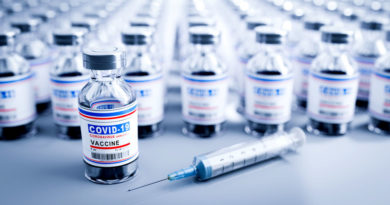No wonder China isn’t using mRNA shots
Guest Post by Alex Berenson
A jaw-dropping, peer-reviewed paper shows China’s old-school vaccine produces a far stronger T-cell response to the coronavirus than the Pfizer/BioNTech mRNA jab
China’s CoronaVac shot caused people to make far more T-cells targeting the coronavirus than those who received Pfizer’s mRNA shot, scientists in Hong Kong have found.
Though it is only one datapoint, the study hints the Chinese shot – which is based on older, well understood principles of vaccinology – may ultimately provide longer-lasting protection than the hastily developed mRNA jabs from Pfizer and Moderna.
The study was published in a peer-reviewed journal called Respirology in November, but has (unsurprisingly) received no attention. It offers a rare head-to-head look at the immune-system effects of the Chinese and Pfizer Covid vaccines, which work in very different ways.
“Humoral responses” are antibodies, the body’s first-line defense against infection; the mRNA vaccines are known to produce supra-natural levels of antibodies, giving rise to short-term protection that fades within months.
T-cells are a part of the immune system crucial for producing long-term immunity and reducing severe disease in people who are infected. The mRNA jabs have been shown to produce relatively limited T-cell protection, but this study appears to have been the first time anyone directly compared them to the Chinese vaccine.
The scientists compared the immune responses in more than 700 people who had received either CoronaVac or mRNA shots, matching them by age and demographic data.
As expected, they found very high levels of anti-spike protein antibodies in people who received the mRNA shot. The mRNA jabs force our cells to make large amounts of the spike protein that sticks out of the shell of the coronavirus. Those proteins then cause the immune system to produce antibodies against it.
The CoronaVac recipients had lower levels of anti-spike protein antibodies. But they also had antibodies to other parts of the coronavirus. Even more importantly, when the scientists ran further tests on a smaller group of about 100 people, they found the CoronaVac shot had sharply increased the level of their coronavirus-targeting T-cells, which last far longer than antibodies.
The new T-cells targeted both the spike protein and another important part of the virus. They included both CD4+ T-cells – which stimulate the overall immune response to infection – and CD8+ T-cells – which directly attack infected cells. Meanwhile, the mRNA jab produced an equally good response in only one of those four types of T-cell.
“The average magnitude of post-vaccination responses was higher in CoronaVac subjects for structural and S-specific T-cell responses,” the researchers explain.
The research was possible because Hong Kong offers its citizens both the CoronaVac shot and the BNT162b2 mRNA jab – the Pfizer/BioNTech shot. (In Hong Kong, BNT162b2 is distributed by a Chinese drugmaker called Fosun, but it is still made by BioNTech and is identical to the shot Pfizer sells elsewhere. A Beijing-based company called Sinovac Biotech makes CoronaVac, which is not approved in the United States.)
CoronaVac’s advantage in producing a T-cell response probably occurs because it presents the body with an invader that is far more like the actual coronavirus than the mRNA shots do.
The CoronaVac shot is a traditional “inactivated virus” vaccine. It contains whole Sars-Cov-2 particles grown in kidney cells and chemically treated so they cannot reproduce. They are then injected alongside an “adujvant” meant to boost the immune response.
In short-term trials, the mRNA vaccines reduced infections far more than the CoronaVac and a second Chinese vaccine called Sinopharm BIBP, which is also an inactivated virus vaccine.
The early results led to considerable chest-pounding about the superiority of Western vaccines and biotechnology in general.
The New York Times, Jan. 13, 2021:
—
But the real-world data from the last year has made clear that the mRNA shots lose their protective effect quickly. Because they focus the body’s immune response on a small part of the coronavirus, they are also very vulnerable to new variants such as Omicron, even after a third “booster” dose.
In fact, Western countries have faced a much harsher Omicron wave since December than countries such as Indonesia, which used more Chinese vaccines than any country except China (although in the last two weeks Omicron cases have risen sharply in Indonesia).
The Hong Kong study may also help explain China’s apparent reluctance to move forward with mRNA vaccines – either its own or those from Moderna and Pfizer/BioNTech. Fourteen months after Fosun announced a deal to make the BNT162b2 mRNA shot available in mainland China, Chinese regulators have refused to approve it.
Don’t worry, though, China will no doubt be glad to set up CoronaVac clinics at pharmacies across America if we ask nicely!
The corrupt establishment will do anything to suppress sites like the Burning Platform from revealing the truth. The corporate media does this by demonetizing sites like mine by blackballing the site from advertising revenue. If you get value from this site, please keep it running with a donation. [Burning Platform LLC – PO Box 1520 Kulpsville, PA 19443] or Paypal




